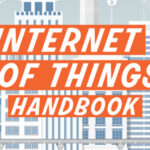The Recogni Scorpio is billed as the world’s first 1,000 TOPS (Peta-Op) class inference solution for autonomous mobility. The vision-inference chip enables superhuman object detection accuracy up to – 300 m in real-time under various road and environment conditions, and the ability to process multiple streams of ultra-high resolution and very high frame rate cameras. Microprocessor Report noted that Recogni’s solution “performs far better than the inference engines in leading SoCs such as Nvidia’s Orin.”
“Vision is fundamental to accurate perception processing and essential to autonomous driving platforms,” said RK Anand, Founder and Chief Product Officer at Recogni. “From the beginning we  took a unique approach of processing high resolution images at the edge to achieve near-perfect object detection and classification, and enable autonomous driving stacks to make better driving decisions. Scorpio can process 300 frames per second in less than 10 msec using only 25 W. That’s a performance order of magnitude greater than anything else on the market and, we believe, will help to accelerate autonomous driving to become a reality.”
took a unique approach of processing high resolution images at the edge to achieve near-perfect object detection and classification, and enable autonomous driving stacks to make better driving decisions. Scorpio can process 300 frames per second in less than 10 msec using only 25 W. That’s a performance order of magnitude greater than anything else on the market and, we believe, will help to accelerate autonomous driving to become a reality.”
Currently being evaluated by several top tier automotive manufacturers and suppliers, Recogni’s solution can achieve 1,000 TOPS with less than 10 msec of processing delay and below 25 W of power consumption. This is not only 10-20 times more power efficient than competing solutions, but it enables the flexible design of autonomous driving vehicle stacks and minimizes the impact on driving range. In addition, with such a short processing time of less than 10ms, the Electronic Control Unit (ECU) has more-than-ample time for taking the necessary driving decisions. High compute capacity, efficient processing, low latency, and low power consumption are the pillars of Recogni’s platform.
“Recogni’s purpose built architecture is a unique approach to AI perception, allowing customers to perceive the environment in high resolution with very low latency and low power – this is a gamechanger for OEMs and suppliers looking to add new, powerful ADAS and self-driving features to new vehicles,” said Marc Bolitho, Chief Executive Officer at Recogni. “Recogni’s unique approach in perception processing is truly first of its kind and enables customers to deploy safe autonomous driving functions as well as extending the range for electric vehicles.”
Recogni, 2590 N 1ST St., Ste 320 San Jose, CA, 95131-1021, www.recogni.com




